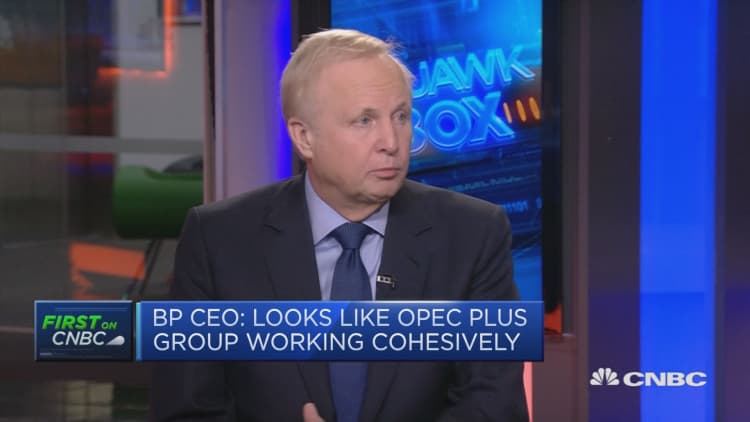Oil prices fell in choppy trade on Tuesday, pulling back from two-month highs after weak U.S. factory orders data rekindled economic slowdown worries.
Despite the slide, investors expect U.S. sanctions on Venezuela and production cuts led by OPEC to head off a glut this year, buoying prices.
U.S. West Texas Intermediate futures ended Tuesday's session down 90 cents, or 1.7 percent, at $53.66 per barrel around 2:25 p.m. ET, near the day's low of $53.47. WTI touched its highest in more than two months at $55.75 in the previous session.
International Brent crude futures were down 41 cents at $62.10 a barrel around 2:25 p.m. ET, near a session low at $61.72 and well off Monday's two-month high of $63.63.
"I think the oil market is trying to decide whether the factory orders will weigh on the price or the Venezuela and oil sanctions will support the price. As a result, we've seen the market fluctuating," said Andrew Lipow, president of Lipow Oil Associates in Houston.
Oil is also modestly out of favor as investors reallocate assets, said Phillip Streible, senior commodities strategist at RJO Futures.
"They are all jumping into the equity markets and getting out of some of the other markets that may be weighed on by U.S.-China trade relations or markets affected by the dollar index," Streible said.
Wall Street was slightly higher on Tuesday, while the dollar also rose.
Still, analysts said U.S. sanctions on Venezuela are focusing market attention on tighter global supplies. Numerous tankers are currently in the water off the Venezuelan coast, unable to move because state-owned PVDSA is demanding payment, which would run afoul of U.S. sanctions.
Supplies of heavy crude oil produced in Venezuela are scarce, as other providers like Mexico and Canada have also faced challenges to output and export.
The Organization of the Petroleum Exporting Countries and its allies, including Russia, agreed to production cuts effective from last month to beat back increasing supply.

The oil industry generally believes the curbs will help to balance the market in 2019, particularly with crude supply growth out of the United States.
"You'll see OPEC disciplined and therefore prices look fairly robust around where they are," BP finance chief Brian Gilvary told Reuters, adding that he expects demand growth of 1.3 million to 1.4 million barrels per day in 2019 - similar to last year.
A Reuters survey found that supply from OPEC states had fallen the most in two years, with Saudi Arabia and its Gulf Arab allies over-delivering on pledged cuts while Iran, Libya and Venezuela registered involuntary declines.
Still, concerns about the pace of global economic growth remained. New orders for U.S.-made goods fell unexpectedly in November, with sharp declines in demand for machinery and electrical equipment, according to data released on Monday.
The global economic outlook and prospects for growth in fuel demand have also been clouded by poor economic data in China and U.S.-China trade tensions.

